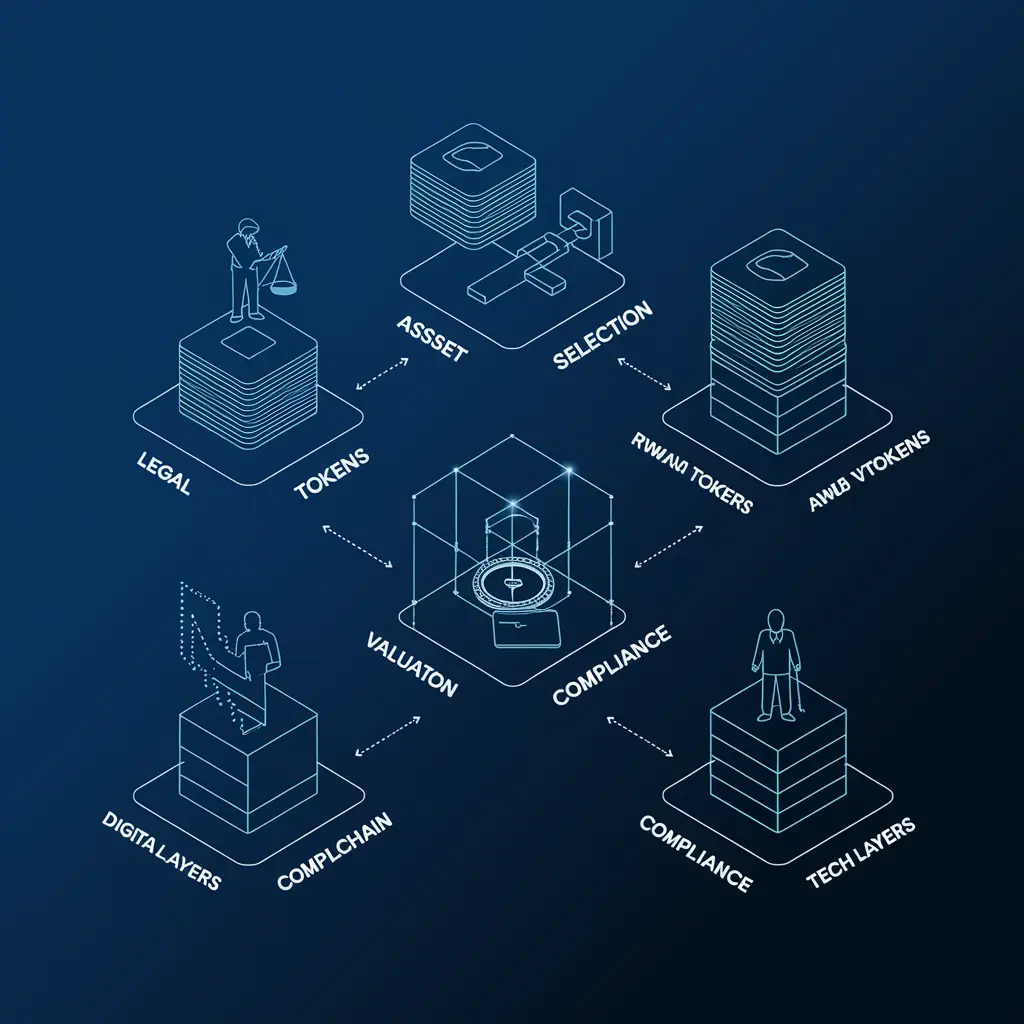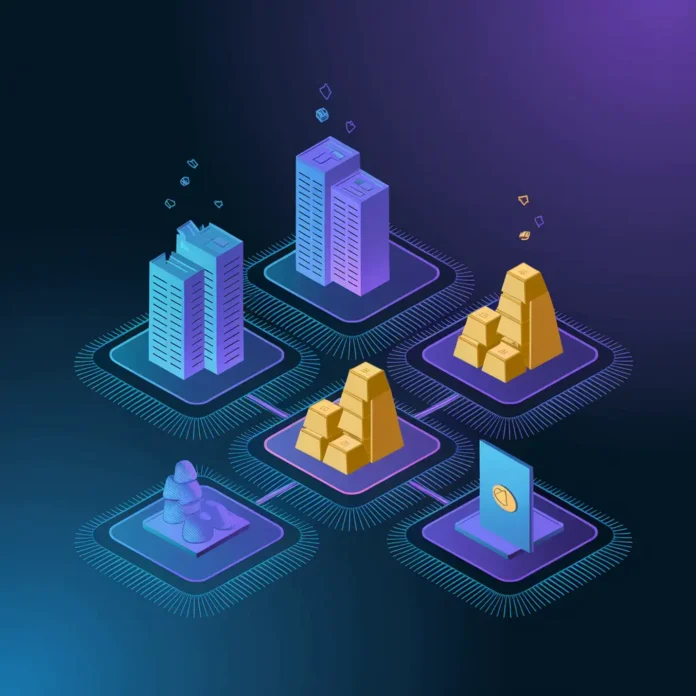RWA Tokenization is redefining traditional asset management by enabling the conversion of physical and financial assets into blockchain-based digital tokens. As industries evolve towards decentralized solutions, RWA tokenization provides a transformative approach to managing and trading real-world assets with greater transparency, efficiency, and accessibility.
What is RWA Tokenization?
RWA tokenization refers to the process of digitizing tangible assets such as real estate, commodities, or artworks into tradable blockchain tokens. Each token signifies a fraction of the underlying asset, enabling broader investor participation and increased liquidity. It merges the physical asset world with blockchain technology to streamline processes, ensure secure ownership, and simplify asset transfer.
How RWA Tokenization Works
To grasp how RWA tokenization functions, it’s essential to understand its key implementation steps:
- Asset Selection and Valuation: A physical asset is selected and accurately valued through professional appraisal.
- Legal Structuring: Establishing a lawful ownership framework, often via a Special Purpose Vehicle (SPV), to clarify rights and compliance.
- Token Development: Cryptographic tokens are created on a blockchain that represent fractional ownership of the asset.
- KYC and AML Compliance: Integration of verification protocols ensures the investment adheres to legal standards.
- Token Distribution and Trading: Tokens are distributed through a platform and become tradable in secondary markets.
Core Concepts of RWA Tokenization
RWA tokenization brings foundational changes to how assets are owned and managed:
- Fractional Ownership: By slicing assets into digital shares, high-value assets become more accessible to smaller investors.
- Enhanced Liquidity: Traditionally illiquid assets like real estate can gain liquidity through token trading.
- Blockchain Security: Immutable blockchain entries protect ownership records and ensure transparent transactions.
- Smart Contracts: Automation of tasks such as payment distributions reduces manual errors and operational costs.
Advantages of RWA Tokenization
The tokenization of real-world assets brings numerous benefits to both investors and asset managers:
- Accessibility: Opens investment doors for non-accredited and global investors.
- Operational Cost Reduction: Fewer intermediaries mean lower transactional and administrative expenses.
- Faster Settlements: Near-instant finality is possible through smart contract execution.
- Increased Transparency: All transactional data is securely recorded and auditable.
Challenges in RWA Tokenization
Despite its promise, RWA tokenization faces several hurdles:
- Regulatory Ambiguity: Inconsistent regulations across jurisdictions create legal uncertainty.
- Technical Barriers: Setup requires blockchain developers, legal expertise, and financial structuring.
- Limited Market Awareness: Investors and asset holders may be unfamiliar or cautious around tokenization models.
Use Cases of RWA Tokenization
Real-world applications of RWA tokenization offer compelling examples:
- Real Estate: Properties can be partially owned and traded via tokens, making property investment more flexible.
- Art & Collectibles: Blue-chip artworks become accessible through fractional tokens.
- Commodities: Assets like gold or oil can be tokenized to improve pricing accuracy and trading efficiency.

Institutional Case Study: BlackRock’s BUIDL Fund
One noteworthy advancement in RWA tokenization is the BlackRock USD Institutional Digital Liquidity Fund (BUIDL), launched in March 2024. This fund allows qualified investors to earn U.S. Treasury yields using tokenized securities. Within four months, BUIDL crossed a $500M market cap, showcasing the appeal and practicality of RWA-based investment structures in mainstream finance.
Trends Shaping RWA Tokenization
Several transformative trends are accelerating RWA tokenization adoption:
- Institutional Entrants: Firms like Goldman Sachs are working to tokenize equities and credit instruments.
- CBDC Integration: Central Banks are using their digital currencies in tokenization trials for real estate across Asia and Europe.
- Sustainable Tokenization: Projects now include ESG-compliant assets, offering environmentally and socially impactful investment vehicles.
Technical Infrastructure of RWA Tokenization
Successfully launching a tokenized asset offering involves:
- Smart Contracts: Built with security-audited standards like ERC-3643 for compliance and flexibility.
- Cross-Chain Compatibility: Using interoperability protocols ensures liquidity and access across blockchain ecosystems.
- Oracles: External data feeds provide real-time valuation and compliance data to smart contracts.
RWA Tokenization vs Traditional Asset Management
A comparison highlights key differences:
| Feature | Tokenized Assets | Traditional Assets |
|---|---|---|
| Ownership | Fractional, on-chain | Legal documents, off-chain |
| Settlement Time | Near-instant | Days to weeks |
| Transparency | Blockchain-based | Opaque and manual |
| Costs | Lower (automated) | Higher (intermediaries) |
| Global Accessibility | High | Limited |
Legal and Regulatory Considerations
RWA tokenization projects must navigate international regulations:
- Compliance Frameworks: Adherence to AML and KYC rules across jurisdictions is crucial.
- Licensing: Depending on region and asset type, licenses for securities issuance and trading may apply.
- Investor Protection: Proper disclosures and access controls must be established within smart contracts and legal documents.
RWA Token Standards and Protocols
Token standards provide structure and compliance flexibility. Common standards include:
- ERC-20: Basic fungible tokens for asset representation.
- ERC-721: Non-fungible tokens for unique real estate or antique assets.
- ERC-3643: Compliance-heavy tokens allowing whitelists, limits, and KYC enforcement on-chain.
Potential Applications by Industry
The flexibility of RWA tokenization allows integration across industries:
- Banking & Finance: Faster bond issuance, integrated yield-bearing tokens.
- Real Estate: Streamlined leasing and investment for commercial/residential properties.
- Manufacturing: Tokenized inventories for supply chain financing.
Future Outlook of RWA Tokenization
Market forecasts estimate explosive growth in tokenized RWAs. According to various financial reports, tokenized assets could approach $16.1 trillion by 2030, representing 10% of global GDP. The growing alignment between decentralization and traditional finance bodes well for the future of capital market efficiency, inclusion, and stability.
Frequently Asked Questions About RWA Tokenization
What does RWA stand for in tokenization?
RWA stands for Real-World Asset, referring to physical assets like real estate or commodities digitized using blockchain tokens.
Is RWA tokenization legal?
Yes, with proper legal structuring and regulatory compliance, tokenized assets are compliant with most financial laws.
How are tokenized assets stored securely?
Ownership rights are recorded on a blockchain, while the physical asset is held by a custodian or within a legal structure like an SPV.
What is the risk associated with RWA tokenization?
Risks include regulatory uncertainty, smart contract bugs, data misrepresentation, and fluctuating market adoption.
Conclusion: Why RWA Tokenization Matters Now
RWA tokenization is unlocking a new era of financial innovation. With secure technology, smart contracts, and regulatory progress, tokenized assets not only democratize ownership but also drive down costs and reduce inefficiencies in traditional financial systems. As institutional adoption accelerates and infrastructure matures, RWA tokenization is destined to become a financial norm in asset management and investment globally.



